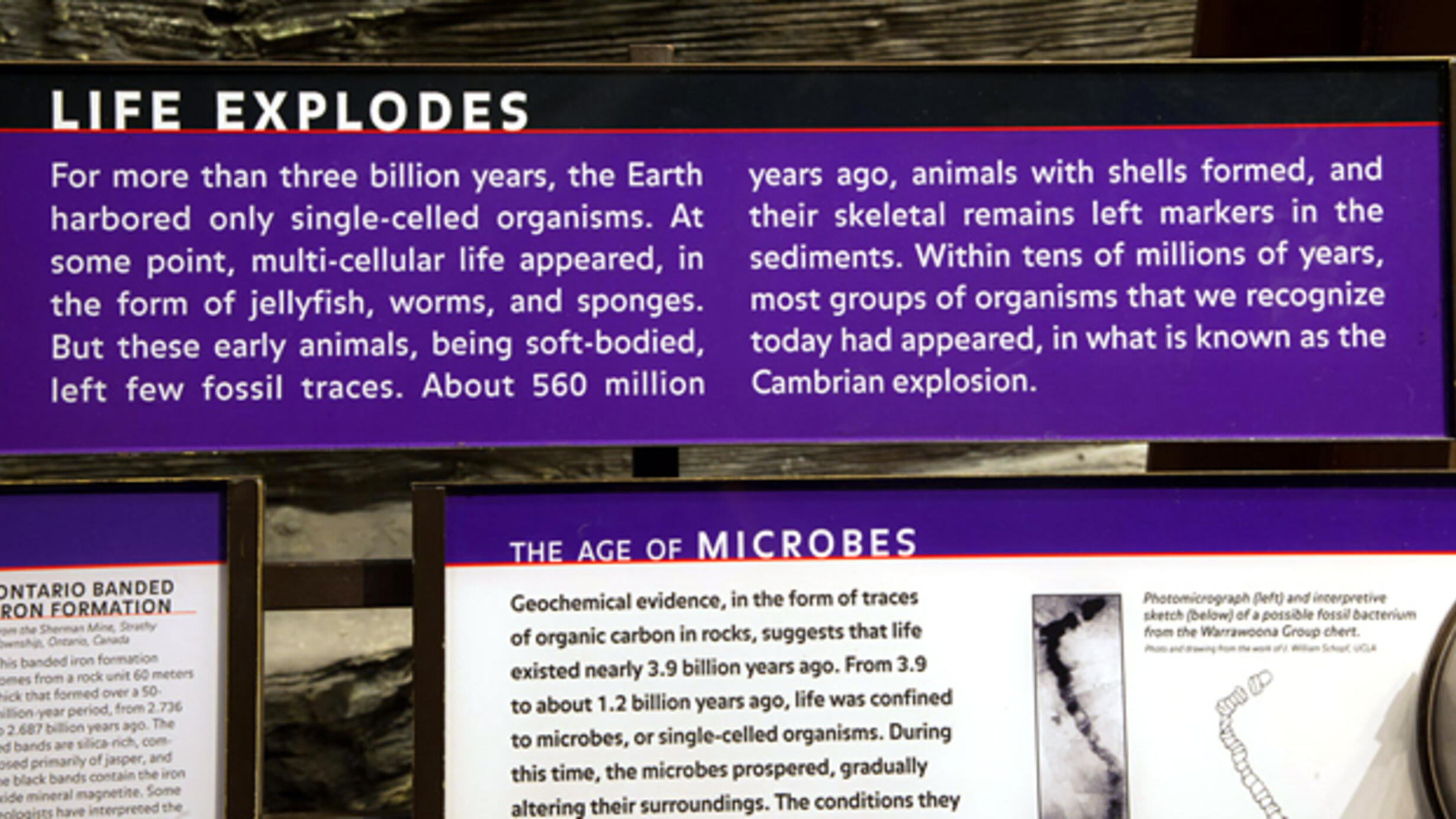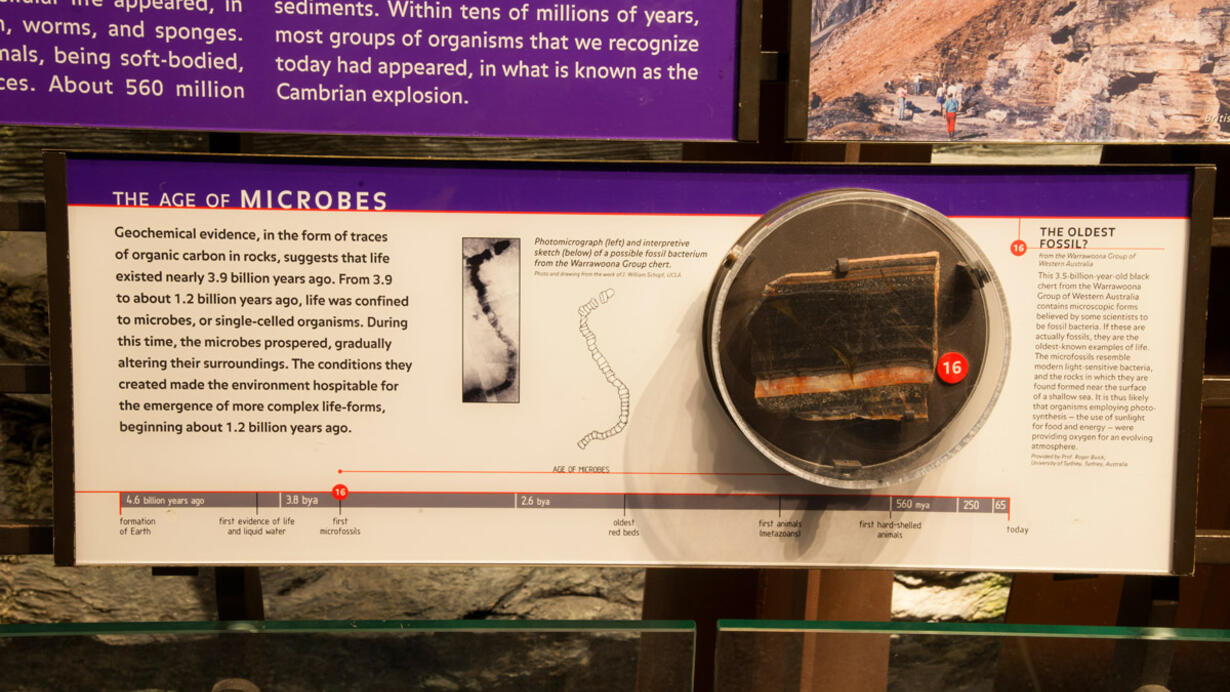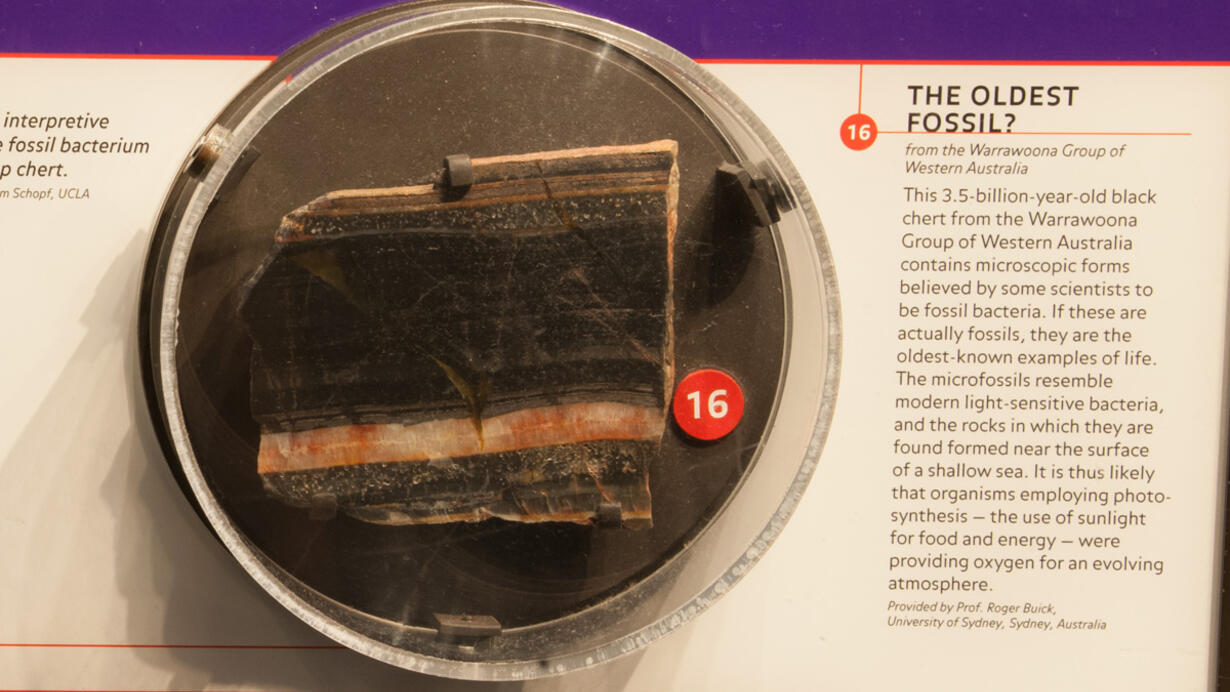Life Explodes
Part of Hall of Planet Earth.

For more than three billion years, the Earth harbored only single-celled organisms. At some point, multi-cellular life appeared, in the form of jellyfish, worms, and sponges. But these early animals, being soft-bodied, left few fossil traces. About 560 million years ago, animals with shells formed, and their skeletal remains left markers in the sediments. Within tens of millions of years, most groups of organisms that we recognize today had appeared, in what is known as the Cambrian explosion.
Cambrian Explosion
For the first 3 billion years of Earth's history, life was limited to microscopic organisms. A little over a billion years ago, multicellular life evolved. Then, over a relatively brief period of 10 million years, there was a burst of new life forms - complex organisms with feet, eyes, scales and other specialized body parts. Evidence for this "Cambrian explosion of life" clearly appears in the fossil record.
This video was produced in 1999 for the David S. and Ruth L. Gottesman Hall of Planet Earth at the American Museum of Natural History.
Video credits:
American Museum of Natural History
Ballentyne Brumble Communications
Burgess Shale Fossils, National Museum of Natural History, Smithsonian Institution, Chip Clark
Thermoproteus Tenax Bacteria, Photo Researchers, Inc.
In This Section
 AMNH/R.Mickens
AMNH/R.Mickens The Age of Microbes
Geochemical evidence, in the form of traces of organic carbon in rocks, suggests that life existed nearly 3.9 billion years ago. From 3.9 to about 1.2 billion years ago, life was confined to microbes, or single-celled organisms. During this time, the microbes prospered, gradually altering their surroundings. The conditions they created made the environment hospitable for the emergence of more complex life-forms, beginning about 1.2 billion years ago.

The Oldest Fossil?
This 3.5-billion-year-old black chert from the Warrawoona Group of Western Australia contains microscopic forms believed by some scientists to be fossil bacteria. If these are actually fossils, they are the oldest-known examples of life. The microfossils resemble modern light-sensitive bacteria, and the rocks in which they are found formed near the surface of a shallow sea. It is thus likely that organisms employing photosynthesis — the use of sunlight for food and energy — were providing oxygen for an evolving atmosphere.
Provided by Professor Roger Buick, University of Sydney, Sydney, Australia.